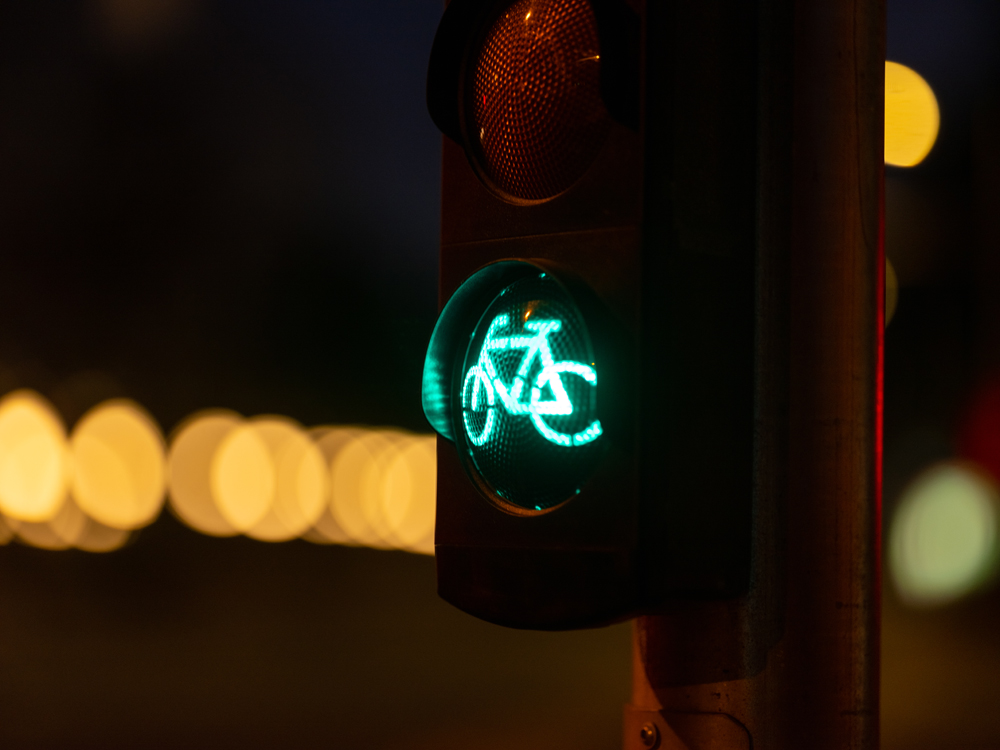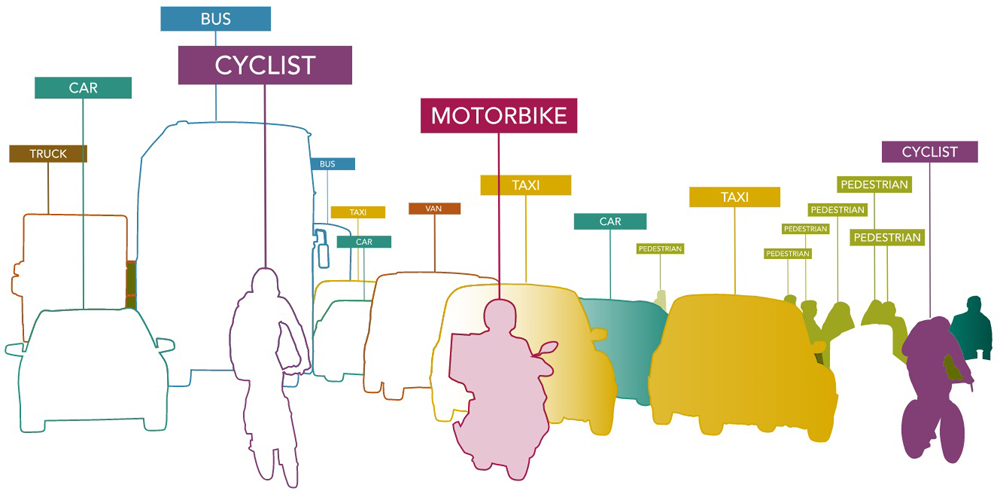
Sitting stationary at traffic lights is one of the great frustrations of driving, whether for business or pleasure. The increasing numbers of people who now use other modes of transport, such as bicycles, also find them an irritant, especially if they are held at a red light but can see that their exit path from a junction is clear. And being stationary in a soup of exhaust fumes is never pleasant, either for cyclists or pedestrians waiting to cross the road.
Methods of smoothing traffic flows have been tried for decades. New technology in the form of artificial intelligence (AI) means that future traffic lights will have the ability to detect different types of vehicles waiting at a junction and filter or prioritise them according to a set of criteria loaded into the signals’ electronic brain. Importantly, they will be able to adapt to changing conditions.
In Manchester, one of the UK’s biggest cities, the first of Vivacity Labs’ AI-controlled junctions on the Inner Ring Road, on the border with Salford, was installed in January 2020, with two more in adjacent junctions in the Blackfriars area introduced in mid-year.
The project is part of a three-year project co-funded by Innovate UK to use AI to optimise traffic networks. It will also use further cash from the UK government’s 5G Create fund to allow the Manchester project to be scaled up over the course of 2021.
The traffic lights’ inbuilt AI allows Transport for Greater Manchester (TfGM) to anonymously identify different types of road users, such as pedestrians, cyclists, cars, black cabs, vans and trucks, and control the signals to prioritise different categories of users at different times.
Data anonymity
The anonymity aspect is important; China’s ubiquitous city surveillance systems are unlikely to be acceptable in the West, so data collected by Vivacity’s systems simply records the various types of road users - not identities.
“One of the things we are building for our local authority client is the authority to determine where and when different priorities are set,” Vivacity Labs’ CEO Mark Nicholson tells ITS International.

Officials can choose what to prioritise and the AI will execute that policy, thanks to an algorithm developed by the company that is able to adapt quickly to changing traffic conditions.
For example, he explains: “At school opening time you might want to optimise air quality so that children aren’t going to be walking through a haze of fug.”
That can be achieved by prioritising trucks at the junction, so they are not idling at the traffic lights and spewing out exhaust fumes.
“At midday, you could optimise the junctions for cyclists and in the evening rush hour, minimise congestion in traffic heading out of the city,” he adds. “Local authorities can choose what to prioritise and use the AI to execute that policy.”
Signals are “an obvious application” for AI, although Nicholson says Vivacity was the first to use this type of technology in sequencing traffic lights.
Using AI to make signals more intelligent has the advantage that the technology is very flexible: “We can tell [the system] ‘This is what we want to look for’ and it will adapt.”
Each piece, or variation, of AI is known as an ‘agent’ and each agent is trained extensively in simulation before it is deployed in the real world. A piece of new AI can be thought of as being akin to a baby, which can be ‘taught’ through simulation on how to react to certain situations.
Additionally, although each set of AI signals can work out what it needs to do to keep traffic flowing, it also cooperates with its neighbours. “We set the objectives, so they know how to minimise congestion and they will work together to do that in the best possible way,” Nicholson continues.
Changing habits
AI gives city authorities the ability to adapt the response of traffic lights in granular terms.
One important aspect of this ability of AI-controlled lights to adapt is to keep abreast of changing travellers’ habits, such as the recent increase in cycling activity – particularly during the pandemic, when people have been keen to avoid public transport if possible – and the growing encouragement to people to walk short distances, rather than jumping in their car. “There are a variety of things that have changed, certainly in the last year,” he goes on.
“Clearly, everything has changed radically, but even before that people were cycling more and there are changes afoot in how the ecosystem works, for example, [the increase in] electric vehicles. We’re looking at how we can prioritise that.”
That could take into account not only conventional electrically-powered cars but other new modes of transport such as electric scooters, which are currently illegal to ride on UK public roads – the Metropolitan Police in London threatened in late December to start confiscating them and handing penalty points to users – but which are appearing in significant numbers and which the government is considering legalising.
So far, feedback from the initial three sites in Greater Manchester has been that the system is “working very well”, said Nicholson. External recognition of the programme’s success has come in the form of the Innovative Use of Technology accolade at the 2020 ITS (UK) Awards.
More locally, the initial project has been lauded by the local transport authority.
“We’ve been really impressed with how Vivacity has approached this, assessing current ways of working and addressing the complexities of managing a multimodal transport network,” said TfGM’s highways network performance manager, Richard Dolphin.
“Hopefully, this development will continue into something that will positively disrupt the industry and revolutionise active travel in urban areas.”
Journey times
Clearly, the drastically changed backdrop of the coronavirus pandemic over the past year has made it difficult to make comparisons with normal traffic patterns or to draw conclusions. Nevertheless, when the AI signals have been operating, journey times have typically been reduced, said Nicholson. He declined to go into precise figures while work was continuing to crystallise the benefits.
“We’re scaling up our analysis as time goes on and we should be able to come out with more precise numbers, particularly as we scale up [sites] across the city,” he said.
Manchester plans to increase the number of AI-controlled lights from the initial three to 15 by summer this year.

In terms of costs, he points out: “Councils today already have traffic signal control systems and have sensors that support those, so we’re essentially just upgrading those type of capabilities. It’s not something that local authorities don’t already spend money on. As they scale up, I believe we will reach the type of price points that are comparable to today’s systems. I see no reason why it shouldn’t be rolled out on a large scale across the UK. There are huge potential benefits to the economy.”
AI has been the primary product of the company since it was founded in 2015 and Vivacity is in conversations with a number of other cities that have expressed interest in the technology. AI for traffic lights has been in development for around three years, as the company has worked on developing that technology to understand road conditions.
“We’ve gone through the early phase of proving that it works in the real world. We now have to go to the point of proving that it scales up cost-effectively,” Nicholson says.
And at the moment, he concludes: “We’re more limited by our own internal resources than we are by demand.”












